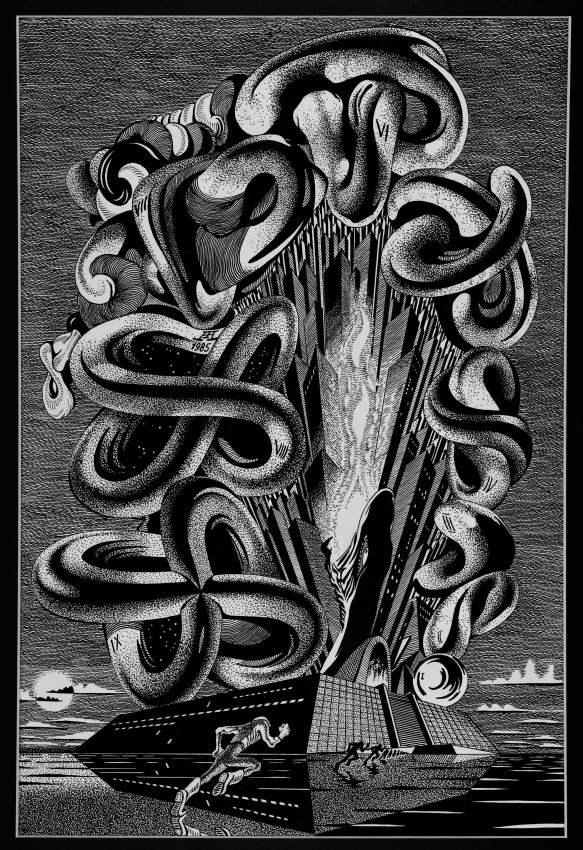A 2-dimensional sphere in 3-dimensional space can be turned inside out
No. 233, 1.985
( Topology of manifolds)
India ink on paper, 34x51 cm.
These wild, convoluted curlicues of tubings, turned in on themselves and wrapped around each other, define some space above a ziggurat-like habitat, set on a reflective sea—ofglass—on which humanoid creatures run, seeking shelter. The point of this image is to show one interpretation of an amazing transformation, the process of turning a sphere inside out. While, on the one hand, we cannot turn a standard circle embedded in a plane inside out with a smooth homotopy, we can turn inside out a two- dimensional sphere in three-space, in a class of smooth immersions, which allow for self-intersections but not breaks or loss of smoothness. In this picture the basic steps of this amazing deformation are laid out. Using a smooth homotopy, we can deform the two-dimensional sphere so as to locate it near a so-called Boy surface, an immersion of the two- dimensional projective plane into three-dimensional space, represented by a very symmetric surface. Through a series of transformations, the sphere's inner and outer surfaces will eventually change places.
